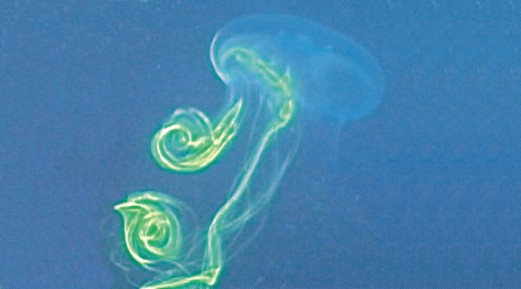 Jellyfish form and function
Jellyfish form and function
|
|
|
|
|
 Jellyfish are one of the first multicellar animals (metazoans) to have evolved. They are simple animals, in that they contain only a few cell types and body parts, but are incredibly complex and diverse in their forms, functions and ecological roles.
Jellyfish are one of the first multicellar animals (metazoans) to have evolved. They are simple animals, in that they contain only a few cell types and body parts, but are incredibly complex and diverse in their forms, functions and ecological roles.
As a result of their simplicity, jellyfish enable us to observe, perhaps more directly than any other metazoan, how closely linked the different jellyfish forms are to their function and ultimately to their ecological role. In fact, with little exception, form seems to define the function and ecological role of jellyfish.

Jellyfish are animals (specifically zooplankton) that primarily live up in the water column (except for Cassiopia). As a result, all jellyfish have been faced with the problem of how to interact with the fluid around them effectively enough to successfully move, capture food, avoid being eaten and reproduce for survival.
Many different solutions have evolved over the last 500 million years. The multitude of jellyfish forms illustrate these solutions because the form of a jellyfish determines how it interacts with the fluid (e.g., how it swims). This, in turn, determines how the jellyfish captures its food, how much it eats, who it eats and who eats it (in other words its function). These different feeding traits in conjunction with where the jellyfish lives, define the ecological role of the jellyfish.
It has been the goal of the collaboration between John H. Costello and Sean P. Colin to understand the relationships between form and function in medusae and to understand how this has influenced the evolution of jellyfish. This website is designed to summarize some of the results of this collaboration.

